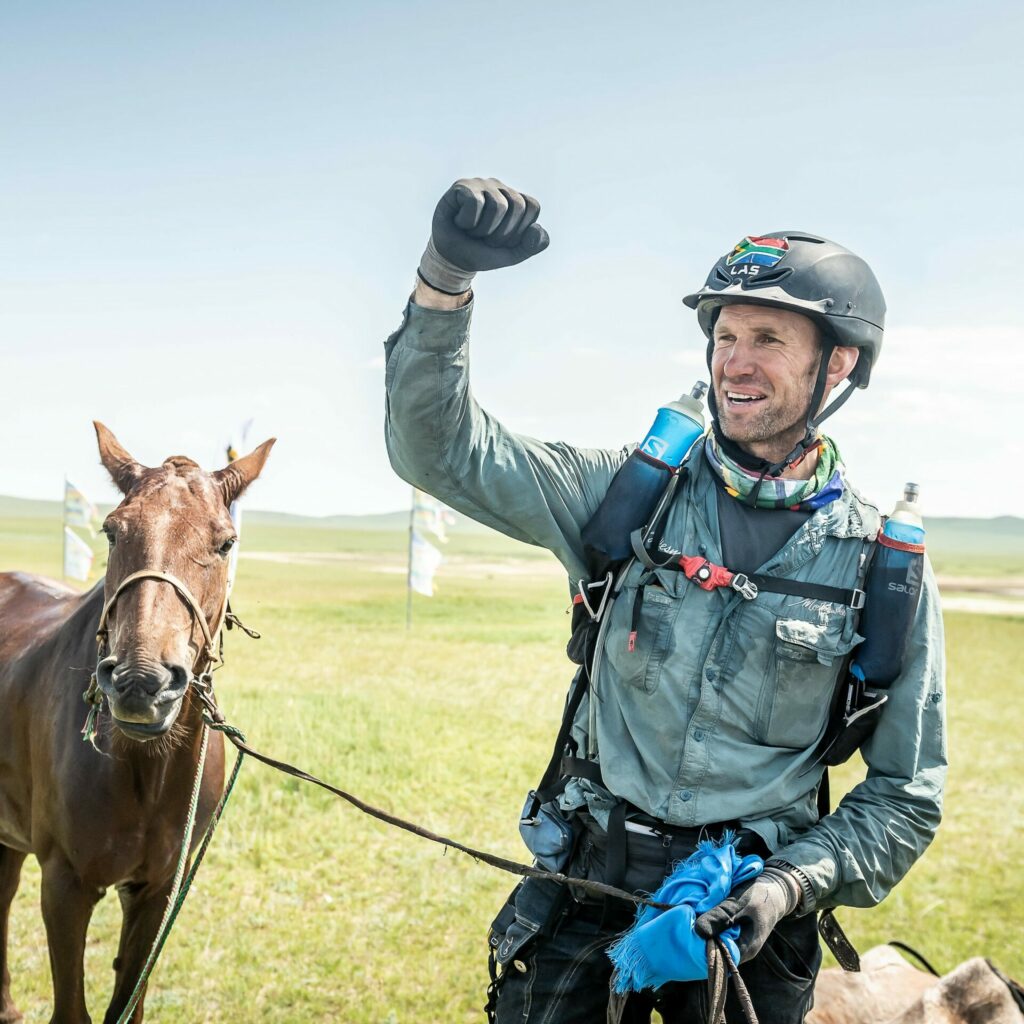The Mongolian Horse
“It is easy to conquer the world from the back of a horse” – Chinggis Khan
Mongolian horses were the intercontinental ballistic missiles of the thirteenth century. They carried the all-conquering Mongol warriors across half the world. Diminutive, sturdy, fearless, wild, and unbelievably tough, they are revered in Mongolian culture, and have changed very little over the centuries, remaining essentially free from human interference.
Of the three million horses inhabiting the vast Mongolian steppe, the great majority of them live in huge quasi-feral herds. They live, eat, and die here having to survive temperature extremes from minus 40 degrees Celsius in winter to plus 30 in the summer. They eat grass and little else, drink water as they find it, and are rarely given any nutritional extras by their human compatriots.
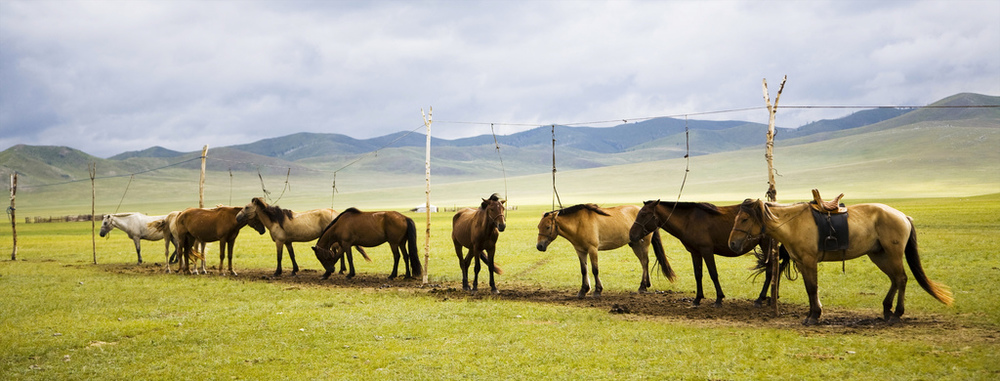
In spite, and also because of this, Mongolia remains one of the last places on earth where the relationship between man and horse is symbiotic. To the nomadic Mongolians living on the steppe, the horses are an integral part of their social culture.
“A Mongol without a horse is like a bird without wings
The male horses are used for transportation, racing, and occasionally, meat. The mares are rarely ridden but are used for milk (up to six times a day in summer) and breeding. Most of the horses are ‘owned’ by a herder or family and branded appropriately, being brought in a few times a day in a similar way to cattle being herded.
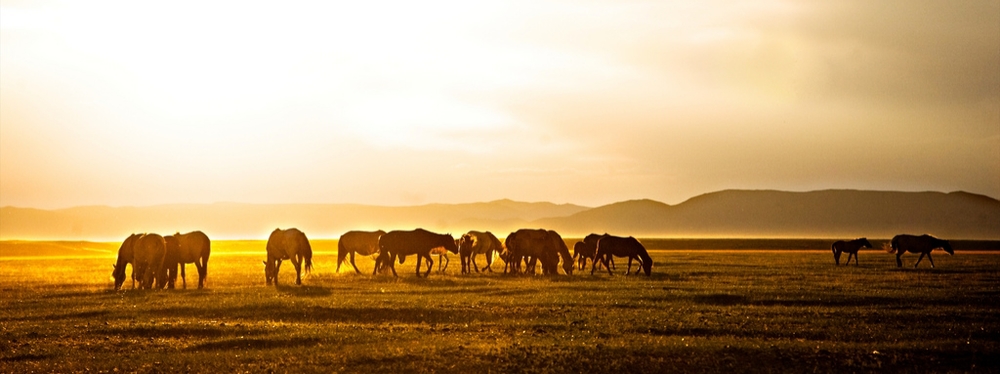
The horses tend to seek out the same grazing places during the seasons so the Mongolians (most of the time) know where to find them. They usually stay within 10kms; herding takes a few hours, and is sometimes just performed with a team of two riders. Once brought in, at the family ‘ger’ (dwelling), the horses are either put in a pen or tied to a line whilst milking takes place or horses are used for work.
The herders tend to have four or five favoured riding horses in a herd of 25 or 30 male horses (and a similar number of mares), and the rest remain a symbol of wealth and status. Around four or five horses will work almost daily, sometimes all day. Some horses are kept for the use of the family as riding horses; older quieter horses are ridden by children/women; and everyone in the family will have favourite horses. They also give them as ‘gifts’ to each other.
Racing too plays an important part in the Mongolian social culture and approximately half the herding families keep one or two racehorses. ‘Naadams’ or race meetings happen four or five times over the summer, from very local events right up to the massive National Festival in the capital Ulaanbataar in July. The children also race yearling and two year old horses over short distances (minimum 5 kms).
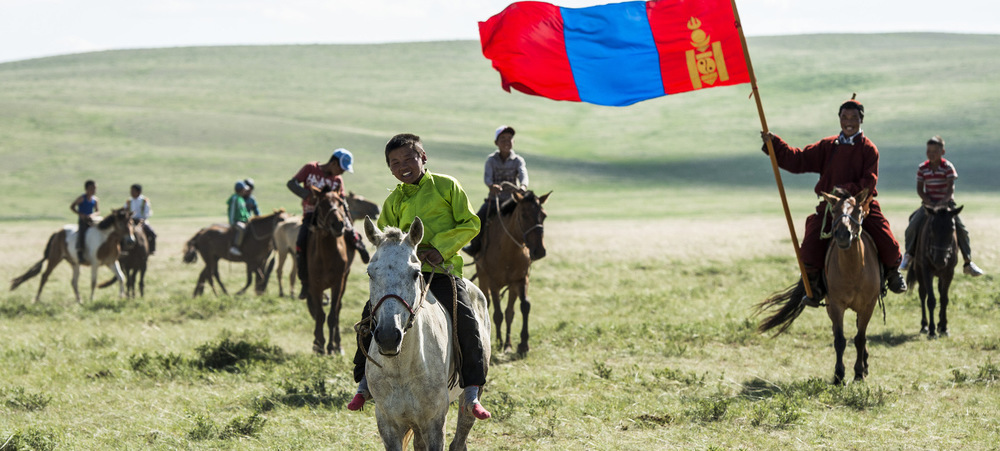
Mongolians often also put the children on foals and weanlings as they start to ‘break’ them in for work. During the day in the summer when their mothers are milked, the foals are tied to a line where the toddlers play with them and socialise them. Herded since birth, the horses are used to being handled so when it comes to being ridden, the process is very quick.
At age two or three, the working and riding horses are hobbled, someone is legged up and the horse broncs off into the distance. If the rider falls off, they just get back on again, and after a matter of minutes, once the horse accepts the rider, it re-joins its herd. The Mongolians ride with absolutely no fear, and amazing balance.
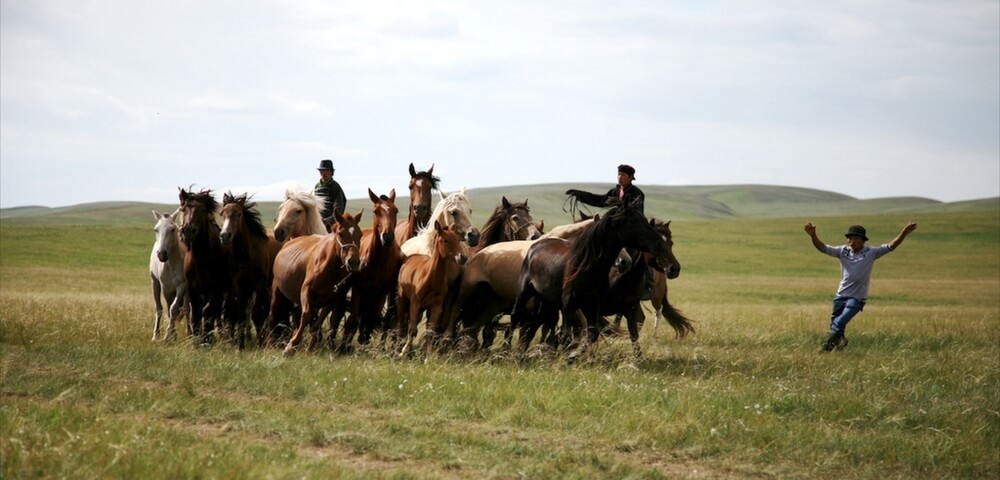
Tack is very basic, consisting of essentially a bridle with two very long thin bars wider than the horse’s mouth, and a wooden-based saddle that has a high back and front making a very stable and comfortable seat and allowing maximum freedom for the horse to move. Mongolian horses have very tough feet and are rarely shod.
Veterinary care is similarly basic. Herders might clean out a wound (with petrol) themselves and cut off rotten flesh, but they cannot put a horse on box rest or an equivalent, as it will starve. If it’s their prized animal they will try and tend to it, and maybe get drugs from a vet if they can, but for lame horses, they leave the pain to limit the horse’s movement, but have to let the horse go out with the herd. Only the fittest survive.
The Mongolian riding style varies greatly from western equitation in the sense that they leave the horse a great amount of freedom in a given situation whilst they perform other tasks. They do not expect to completely control the horse but trust it to do its job and find the best way through. Therefore, if a western rider gets on a Mongolian horse and expects absolute control, the Mongolian horses essentially rebel!

Most horses have five gaits instead of four (the fifth being a running walk variously called tölt, single-footing, or racking) and most seem to prefer cantering in virtually any situation.
Mongolian horses are not monitored by any kind of breeding society or registry. Mother Nature is pretty much the registry association for the breed. If they can’t survive the weather, the terrain and cannot exist on available plants, then they won’t survive to breed.
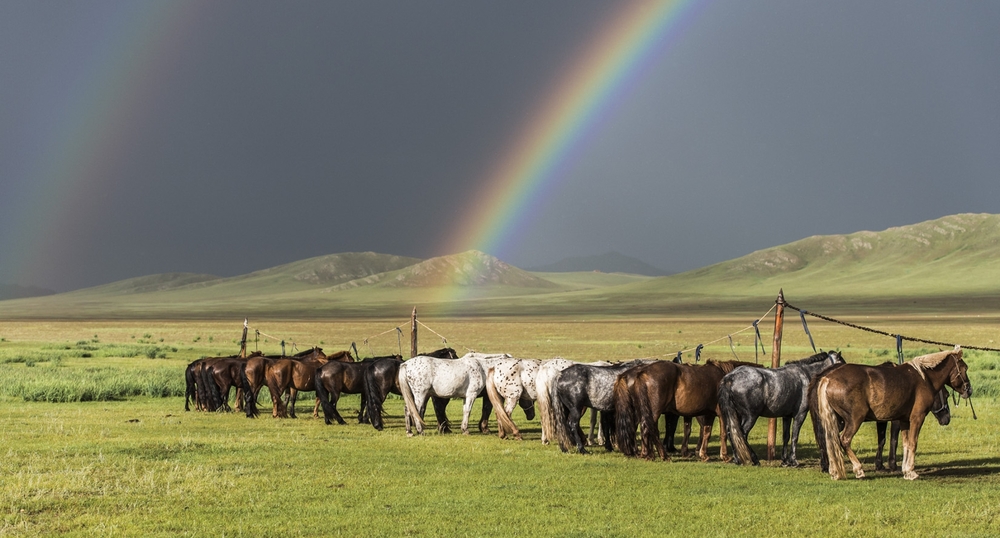
The horses stand between 12 and 15 hands, have short necks, short legs and are built like bricks. Their cannon diameter is about eight inches. Many have conformation flaws frowned on by European breeds such as cow hocks, ewe necks, or ram profiles. Although they are categorised as ‘horses’, they are pony-sized and pony shaped and come in all the colours of the equine rainbow.
Often working up to the age of 18, these supremely tough beasts are a complete contrast to the steroid-enhanced endurance horses that are in the news so much today. In a land locked country of only three million people, the three million horses remain integral to everyday life in Mongolia.
“Mongolians see horses the way most people see their cars.”
